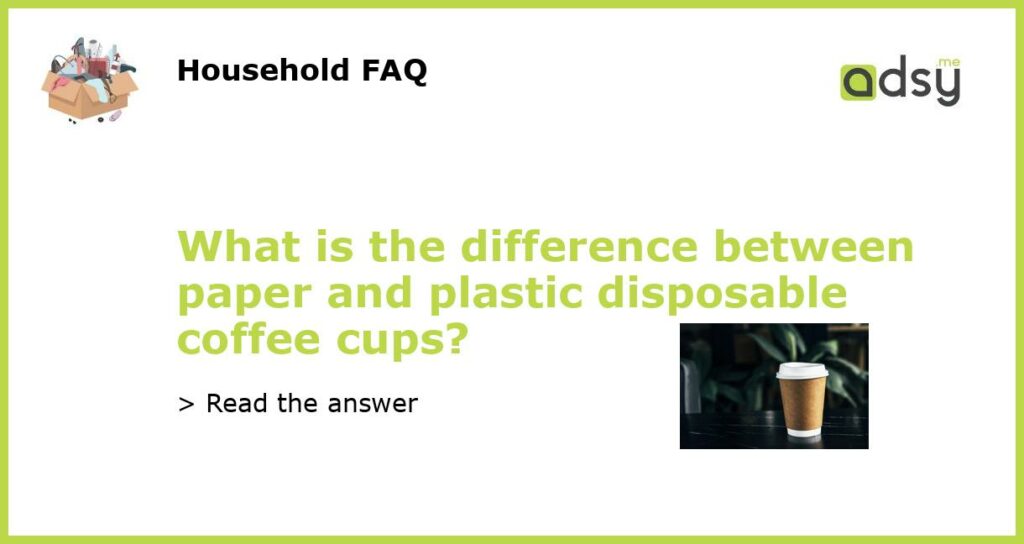Disposable coffee cups have been a staple in our lives for years, but with increasing environmental concerns, people are becoming more conscious of the impact these cups have on the planet. One common dilemma is choosing between paper and plastic disposable coffee cups. In this article, we’ll explore the differences between the two types and their environmental impact.
Paper cups
Paper cups are made from a renewable resource, paper. They are generally compostable and biodegradable, making them an excellent choice for reducing environmental impact. Most paper cups are lined with a thin layer of plastic to prevent leakage, but these liners are usually minimal and do not pose a severe threat to the environment.
However, paper cups do have their drawbacks. The manufacturing process for paper cups requires a significant amount of energy, water, and resources. They are also not as durable as plastic cups and are more prone to leaks and spills. Additionally, many coffee shops use paper cups with plastic lids, which increases their environmental impact as both materials must be disposed of.
Plastic cups
Plastic cups are lightweight, durable, and can be easily transported. They are suitable for use in many different environments, including outdoor events and festivals. Unlike paper cups, plastic cups are not easily biodegradable and can take hundreds of years to break down.
However, plastic cups have some advantages over paper cups. They are reusable and can be recycled, which reduces their environmental impact. Plastic cups are also more durable and less likely to leak, making them a better choice for transporting hot or cold beverages.
Environmental impact
The environmental impact of both paper and plastic cups can be significant. Paper cups require a significant amount of energy and resources to manufacture, and their disposal can be problematic if not composted. Meanwhile, plastic cups are not biodegradable and can litter our oceans and waterways for centuries.
Overall, the best choice is to bring your reusable cup or mug when possible. If you must use disposable cups, look for those made from sustainable and biodegradable materials. Some coffee shops also offer discounts to customers who bring their reusable cups, so it’s worth considering as a way to reduce waste.
In conclusion, paper cups are generally more environmentally friendly than plastic cups due to their compostable nature. However, plastic cups are more durable and can be recycled, which reduces their environmental impact. Ultimately, the best way to reduce waste is to bring your reusable cup or mug when possible and to choose sustainable and biodegradable options when disposable cups are necessary.






